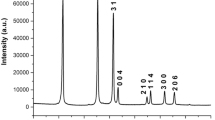Abstract
Objective
E-waste is a menacing factor not only because of the large volume but also because of its toxic nature due to the presence of heavy metals and noxious substances. Improper disposal of E-waste leads to the release of numerous pollutants into the environment. PCBs (or Printed Circuit Boards) are the most important components of e-waste as they are present in almost all electronic and electrical devices.
Methods
In the present study, we elucidate the acute and neurobehavioral toxicity of E-waste extracts using Zebrafish model. Zebrafish are used as a model for toxicology, pharmacology, neuroscience and it has a well-developed neural system, unique neurobehavioral aspect and high genetic homology to mammals, including humans. The PCBs were cut down to the dimension of 5 mm × 25 mm and components of PCBs are leached using physiological saline solution at 70°C. Fishes were exposed to different concentrations (50%, 25%, 12.5%, 6.25%, 3.125%, and 1.562%) of E-waste extract for 96 hours and behavior abnormalities were studied at the end of every 24 hours.
Results
The median lethal concentration or LC50 value of E-waste extract was found to be 3.733%, indicating high toxicity. Mortality of the fishes is directly proportional to concentration of the extract. Neurobehavioral assays such as, novel tank diving test, sociability test and cognition test, were done to the fishes exposed to E-waste extract. The novel tank test shows an increased bottom-dwelling response, poor risk-taking behavioranddifferent anxiety response. Sociability test showed poor social interaction.
Conclusion
The test fish preferred empty chamber over conspecific. Learning and memory test showed long-term memory impairment, loss of tendency or delayed latency to make a choice response, condensed number of arm entries and freezing. Overall, the findings indicate that E-waste is highly toxic. It also affects social preference, and leads to increased anxiety and cognitive impairment in zebrafish.
Similar content being viewed by others
References
Cui, J. & Forssberg, E. Mechanical recycling of waste electric and electronic equipment: a review. J. Hazard. Mater. 99, 243–263 (2003).
Widmer, R., Oswald-Krapf, H., Sinha-Khetriwal, D., Schnellmann, M. & Böni, H. Global perspectives on e-waste. Environ. Impact Asses. Rev. 25, 436–458 (2005).
Robinson, B.H. E-waste: an assessment of global production and environmental impacts. Sci. Total Environ. 408, 183–191 (2009).
Ongondo, F. O., Williams, I. D. & Cherrett, T. J. How are WEEE doing? A global review of the management of electrical and electronic wastes. Waste Manag. 31, 714–730 (2011).
Xi, Y., Noble, S. & Ekker, M. Modeling neurodegeneration in zebrafish. Curr. Neurol. Neurosci. Rep. 11, 274–82 (2011).
Cachat, J. et al. Measuring behavioral and endocrine responses to novelty stress in adult zebrafish. Nat. Protoc. 5, 1786 (2010).
Blaser, R. E. & Rosemberg, D. B. Measures of anxiety in zebrafish (Danio rerio): dissociation of black/white preference and novel tank test. PloS One. 7, e36931 (2012).
Sepúlveda, A. et al. A review of the environmental fate and effects of hazardous substances released from electrical and electronic equipments during recycling: Examples from China and India. Environ. Impact Asses. Rev. 30, 28–41 (2010).
Kalueff, A. V., Stewart, A. M. & Gerlai, R. Zebrafish as an emerging model for studying complex brain disorders. Tren. Pharmacol. Sci. 35, 63–75 (2014).
Bailey, J., Oliveri, A. & Levin, E. D. Zebrafish model systems for developmental neurobehavioral toxicology. Birth Defects Res. C Embryo Today 99, 14–23 (2013).
Barba-Escobedo, P. A. & Gould, G. G. Visual social preferences of lone zebrafish in a novel environment: strain and anxiolytic effects. Genes Brain Behav. 11, 366–373 (2012).
Saverino, C. & Gerlai, R. The social zebrafish: behavioral responses to conspecific, heterospecific, and computer animated fish. Behav. Brain Res. 191, 77–87 (2008).
Khaliq, A., Rhamdhani, M. A., Brooks, G. & Masood, S. Metal extraction processes for electronic waste and existing industrial routes: a review and Australian perspective. Resources 3, 152–179 (2014).
Chauhan, R. & Upadhyay, K. Removal of heavy metal from e-waste: a review. IJCS 3, 15–21 (2015).
Schulte, C. & Nagel, R. Testing acute toxicity in the embryo of zebrafish, Brachydanio rerio, as an alternative to the acute fish test: preliminary results. Atla 22, 12–19 (1994).
Pittman, J. T. & Ichikawa, K. M., iPhone® applications as versatile video tracking tools to analyze behavior in zebrafish (Danio rerio). Pharm. Bio. Behav. 106, 137–142 (2013).
Yang, M., Silverman, J. L. & Crawley, J. N. Automated three-chambered social approach task for mice. Curr. Prot. Neuro. 56, 8–26 (2011).
Deacon, R. M. Appetitive position discrimination in the T-maze. Nat. Protoc. 1, 13 (2006).
Collymore, C., Tolwani, R. J. & Rasmussen, S. The behavioral effects of single housing and environmental enrichment on adult zebrafish (Danio rerio). J. Am. Ass. Lab Anim. Sci. 54, 280–285 (2015).
Levin, E. D. Zebrafish assessment of cognitive improvement and anxiolysis: filling the gap between in vitro and rodent models for drug development. Rev. Neuro. 22, 75–84 (2011).
Author information
Authors and Affiliations
Corresponding author
Rights and permissions
About this article
Cite this article
Surenderan, S., Murkunde, Y. Elucidation of Acute and Neurobehavioral Toxicity of E-Waste Extracts with Special Reference to Cognitive Impairment, Anxiety and Stress Response Using Zebrafish. Toxicol. Environ. Health Sci. 11, 27–35 (2019). https://doi.org/10.1007/s13530-019-0385-5
Received:
Revised:
Accepted:
Published:
Issue Date:
DOI: https://doi.org/10.1007/s13530-019-0385-5




